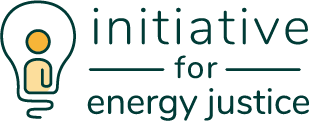Around the country, states have begun to act in the absence of clear federal guidance on climate. We are witnessing a sea change through a suite of policy actions, from ambitious renewable energy targets, to rooftop solar programs, community energy legislation, and market innovations such as community choice aggregation. In the face of this rapidly-evolving landscape, those disproportionately harmed by the fossil-fuel based energy system (“frontline communities”) and more broadly, marginalized communities (including, but not limited to, environmental justice communities, indigenous communities, low-income and working-class communities, and communities of color)—seek to place equity and distributive justice at the heart of new policies addressing the transition away from fossil fuels to clean and renewable energy sources. As noted by industry observers and community activists alike, this energy transition offers an opportunity to reshape the socio-economic relationships created by energy policy choices. It creates an opening to center the concerns of frontline communities in the creation of energy policy. For example, the energy transition offers an opportunity for communities to own and control clean energy resources while reducing localized environmental and health impacts associated with the burning of fossil fuels.
Energy justice has emerged as both a field of study and practice to guide the energy transition, but the inconsistency surrounding definitions and use threatens the coherency of the field and the ability to advance clear policy guidance actually rooted in energy justice. Scholars in both social science and law have begun to grapple with the theoretical aspects of energy justice as well as its practical applications. In parallel, advocates have also begun to engage in a diversity of activities connected to energy justice and its corollaries, energy equity and energy democracy. Although scholars and practitioners frequently rely on energy justice and energy equity to animate parallel strands of study and practice, these two constituencies are not in active conversation and these parallel strands rarely, if ever, intersect. In light of the varied landscape, we choose to use the term, “energy justice” because we find it to be the most unifying terminology for this overarching concept that can synthesize and lift up both the traditions of justice-based scholarship, and recent activist practice around energy equity and energy democracy.
Taking advantage of the opportunity for structural transformation in our energy system requires that equity be placed at the center of emerging policy frameworks; however, community participants in policy debates concerning the energy transition often lack concrete details for energy policies that actually do place equity at the center. Similarly, policymakers lack theoretical grounding and practical frameworks to create and implement equity-centered energy policy. This Workbook addresses these gaps, and builds a bridge between theories and practices of energy justice to facilitate operationalizing energy justice through energy policy. The key audiences for this Workbook include community advocates and policy makers. The Workbook should serve as a guide for activists and advocates on the ground working for energy justice at the state level, and to assist policymakers seeking to understand how to incorporate energy justice into their emerging energy policy frameworks.
How to use this Workbook
The pages that follow provide a broad overview of “energy justice,” synthesizing energy justice (and similar terms) as framed by practitioners in the field, as well as by scholars explicitly writing about energy justice.
The Workbook proceeds in four sections. Section 1 provides an overview and synthesis of energy justice, as discussed by frontline advocates, social scientists, and legal scholars. The section ends with a summary of the key energy justice principles that should animate transitional energy policy. Section 2 lays out an energy justice scorecard that may be used by advocates and policymakers to evaluate and design transitional energy policy. Section 3 uses the scorecard developed in Section 2 to evaluate emerging community energy policy in California and New York. We have also included a Glossary and Appendix for easy access to commonly used terms and the data we’ve relied on in our analysis.
The energy policy landscape is dynamic, and energy justice is context specific. However, basic principles of justice endure. We designed this Workbook to be highlighted, dog-eared, and referenced as the policy landscape evolves. The framework provided herein should be used to provide key benchmarks to guide energy policy discussions. We also designed this Workbook to address the question that frequently arises in the context of equity and energy policy: What is energy justice?
